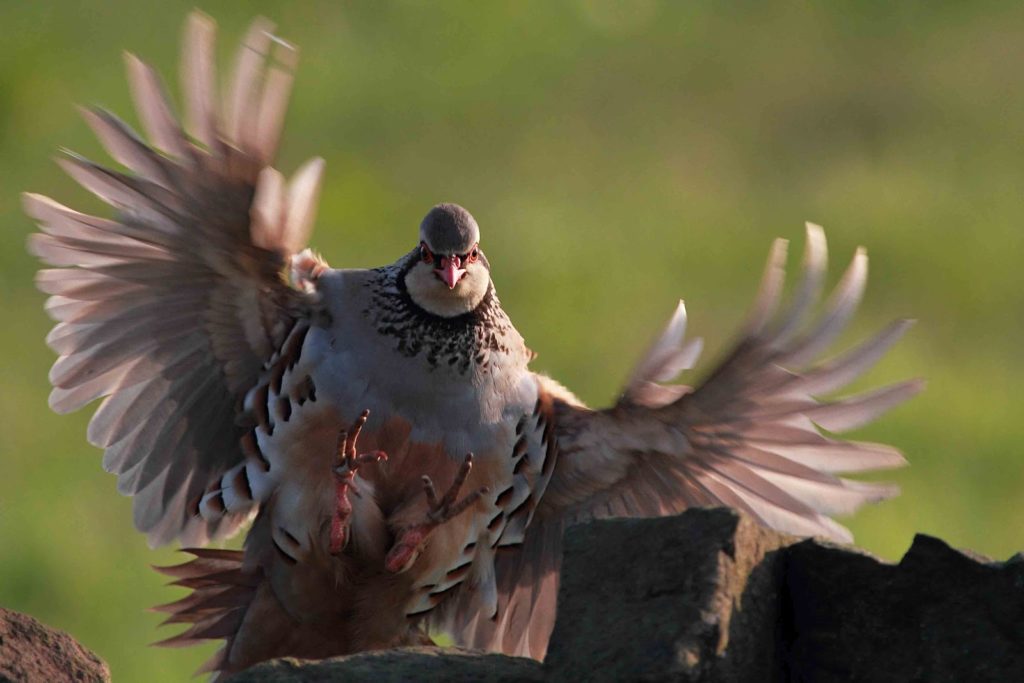Flushed from the shallow, seasonal pond, a flock of teal wheels in the December sky, and two, then three, snipe erupt from a clump of reeds, zigzagging erratically in typical fashion. Daylesford Organic Farm’s environmental scientist Tim Field sighs with satisfaction: “If you get a peregrine among that lot, then you’re really seeing something.’’ In the summer, Daylesford – a mixed farm in the north-east of the Cotswolds – has lapwings, too, though they have yet to raise any chicks. At the pond’s edge, Field proudly reveals the artificial holt put in for an otter that traverses Daylesford’s portion of the River Evenlode.

With winter linnets in the market garden, and a sparrowhawk patrolling a small copse, this is farmland as it’s meant to be. For anyone thinking, “That’s all very well, but you pay twice as much for the food because it’s organic”, here’s a short quiz. How much do you pay for a pint of milk -50p? 75p? £i? Are you sure? Did you consider the cost of removing pesticides, nitrates and phosphates from our water courses, or the price that we will eventually have to pay for the loss of soil from our landscape? Research dating back to 1996 calculated the total, external costs of British agriculture at £2.34 billion, but added that this was almost certainly a “substantial underestimate”.
THE TRUE COST OF FARMING
For a start, the research didn’t consider the cost of coping with climate change that can be attributed to food production, or indeed the subsidies paid to farmers through the EC’s Common Agricultural Policy (CAP) – research has estimated it cost the UK £47bn in 2008, or nearly £400 per household per year. If you’re a taxpayer and the customer of a privatised water company, then you foot the bill for all of these ‘externalities’. “We are paying a lot more for our food in hidden ways,” says organic-farming pioneer Patrick Holden, founder of the Sustainable Food Trust.
“Through taxation, through CAP and through the Health Service, because we’re feeding the public bad food. We are degrading environmental capital, and storing up problems for our children. This is not true-cost accounting – an auditor would declare it illegal.” By not, on the whole, using artificial fertilisers and pesticides and by being less reliant on monoculture farming, the organic system does not offload these ‘externalities’ to the consumer in the same way, and therefore appears to be artificially expensive. Conventional food would cost more if we paid its true price, whether it’s milk, maize or manuka honey.
IMPACT ON WILDLIFE
But the true cost of farming to our wildlife has never been clearer – the number of farmland birds, for example, decreased by 54 per cent between 1970 and 2014. The loss of wildflower meadows since World War II has been even more dramatic – down by 97 per cent – while an estimated 320,000km of hedgerows have been ripped out. Organic farming can help to reverse these losses, as shown by a catalogue of peer-reviewed research. Positive impacts have been found for plants, invertebrates, birds and small mammals, with one meta-analysis finding that organic farming increases overall species richness by 30 per cent. But because consumers usually pay more for organic food, it is a marginal commercial activity, with just 2 per cent of the UK food market.

Other ways of counteracting wildlife declines work by rewarding farmers through Countryside Stewardship ‘agrienvironment’ (AE) schemes, in which payments are distributed via CAP for the implementation of wildlife-friendly features such as wildflower strips, beetle banks and seed-producing cover crops. We know that -these work because the RSPB has been meticulously monitoring what’s taken place at its demonstration farm in Cambridgeshire. It bought Hope Farm in the early 2000s, and has been farming it conventionally but developing techniques and features -that provide food and habitat for birds and insects. In that time, says manager Ian Dillon, it has been able to maintain crop yields while increasing wildlife populations. “We did our monthly winter bird count earlier this week,” Dillon says as he shows me around the farm. “We recorded 2,300 birds of 43 species of which 378 were yellowhammers, compared with 250 birds of 22 species in December 2000 – of which two were yellowhammers”.
In terms of the total number of birds, that’s an increase of 920 per cent in only 15 years. During the same period, the number of skylark territories on the farm has soared from 10 to 40, and there are six or seven pairs of grey partridges, a species that has declined by 90 per cent in the past four decades. So AE schemes do work. But if that’s the case, then how come 70 per cent of UK farms have a scheme of one sort or another, yet wildlife populations continue to decline? There are, arguably, two key problems. The first is that, until last year, the system was set up so that most farmers were paid for doing very easy things that have not been shown to benefit wildlife – instead of growing a wildflower margin by the side of a field, for example, they just make it grassy. According to Dillon, choosing these “easier, cheaper” measures delivers more profit for farmers, so no wonder they’re the default option.

Now, AE has changed and – conservationists agree – should produce better results for wildlife over time, even though fewer farms will receive payments. Plus, argues Alastair Leake, who runs Allerton, the Game & Wildlife Conservation Trust’s demonstration farm in Leicestershire, farmers of his generation were trained merely to worry about increasing their yields in the years following World War II, when food security was the major concern. “Suddenly, we build the environment into our thinking and expect farmers to be able to address it,” he says. “So the fact that 70 per cent of them have signed up to an agreement is fantastic.”














